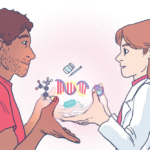Lien vers Pubmed [PMID] – 16384927
Blood 2006 May;107(9):3745-52
The spleen plays a central role in the pathophysiology of several potentially severe diseases such as inherited red cell membrane disorders, hemolytic anemias, and malaria. Research on these diseases is hampered by ethical constraints that limit human spleen tissue explorations. We identified a surgical situation–left splenopancreatectomy for benign pancreas tumors–allowing spleen retrieval at no risk for patients. Ex vivo perfusion of retrieved intact spleens for 4 to 6 hours maintained a preserved parenchymal structure, vascular flow, and metabolic activity. Function preservation was assessed by testing the ability of isolated-perfused spleens to retain Plasmodium falciparum-infected erythrocytes preexposed to the antimalarial drug artesunate (Art-iRBCs). More than 95% of Art-iRBCs were cleared from the perfusate in 2 hours. At each transit through isolated-perfused spleens, parasite remnants were removed from 0.2% to 0.23% of Art-iRBCs, a proportion consistent with the 0.02% to 1% pitting rate previously established in artesunate-treated patients. Histologic analysis showed that more than 90% of Art-iRBCs were retained and processed in the red pulp, providing the first direct evidence of a zone-dependent parasite clearance by the human spleen. Human-specific physiologic or pathophysiologic mechanisms involving clearing or processing functions of the spleen can now be experimentally explored in a human tissue context.



